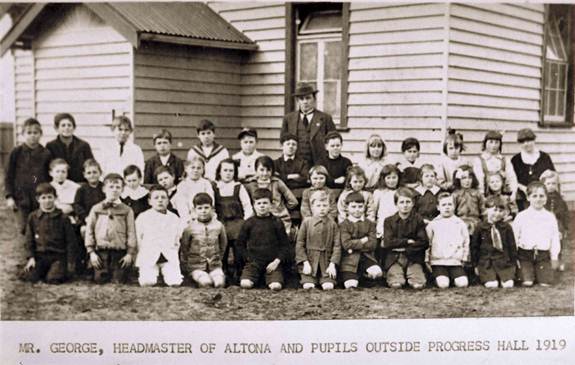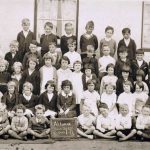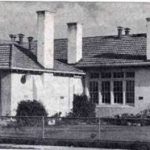
The History of Altona Primary School
In 1914, two weeks before the first World War was declared, the late Mr. and Mrs. L. Fleming came with their four children, aged seven years to six months, to reside in Altona (another two were born in Altona).
After the Flemings had been in Altona for seven months other families began moving into the area. As the children would have to travel miles for their education, Mr. Fleming approached the Education Department with a request for an Altona school.
He was advised that if there were 14 school age children and a suitable building available a school would be opened. A census of the children revealed 13 of school age. Mr. and Mrs. Fleming decided to erect a building suitable for a school. They built a 30′ x 1 1’6″ weatherboard building on their property to the Education Department’s specifications.
The contract to use the hall as a school was signed on 27/10/1915 and the first teacher, a young lady, was Miss Bavington who boarded at the Fleming’s home.
After the first Christmas holidays a Miss Cutts took over. When the building could no longer accommodate the growing number of children the school was moved to the Progress Hall in Blyth Street. Two teachers took charge — Mr. Mortin and his daughter. The hall was divided in two by a canvas blind erected across the centre of the building. Miss Mortin taught grades 1-3 at one end and her father grades 4-8 at the other end.
Mr. George replaced the Mortins and was in charge for a year and then followed a teacher who is still kindly thought of by his ex-pupils, Mr. Borrack.
The attendance at this time (1920-22) was about 160. Classes were now being held in the Progress Hall Mrs. Spears Tea Rooms and Davey’s A.B.C. Cafe near the pier. Miss Silk was in charge of the grades in the café which spent their nature study periods walking along the beach.
In the meantime the School Committee was urging the Department to erect a new school building. As Secretary of this Committee, Mr. L. Fleming, Snr., made many visits to the Department to discuss the needs of the school. After obtaining the help of John Lemmon, the then State member, who applied some political pressure, plans were put on public display in 1921 and on 28th November, 1922, the present school (No. 3923), without the later additions, was opened on the corner of Blyth and Upton Streets with five teachers and 225 students. Since 1950, the school buildings have been added to four times and a library in 1972. The 1973 enrolment was 595.
So School No. 3923 will remain a memorial to the early residents of the district who struggled so hard to provide adequate school buildings for their children.
The rough casting of the school was completed some time before 1935, believed to be due to a mix of brickwork colours when rooms 5, 6 and 7 were added.
The History of Altona Primary School Buildings
In 1951, room 10 (or the Bristol, as it is commonly known) was brought out from England, and later on came rooms 8 & 9. Since then, the rest of the Infant Department has been completed (rooms 17, 18 & 19 being added only this year.)
The year 1931 saw the arrival of the school’s new Head Teacher, Mr Herbert D. Willis, who remained until January 1935, when he was replaced by Mr James A. Boyce. Then followed W. D. Williams (27.9.39 – 22.7.47), J.J. Keddie (3.2.48 – 30.1.50) J.F. Murphy, father of one of our present teachers (31.1.50 – 11.10.56) and our present Head Teacher, Mr G-.H.L. Treyvaud, who took up duty at the school in February of 1957. During the early fifties, the Education Department acquired additional land at a cost of £1911 from M. R. Gill, L.E. Bain, Altona Beach Estates, N.S.W Reality Co., V.R. Chambers, C.H. Moore & P. Satori, (this acquisition included part of Webb street). For those who may be interested, the rough casting of the school building was completed some time before 1935, and is supposed to have had something to do with a mix-up in brick-colours, when rooms 5, 6 and 7 were added.




